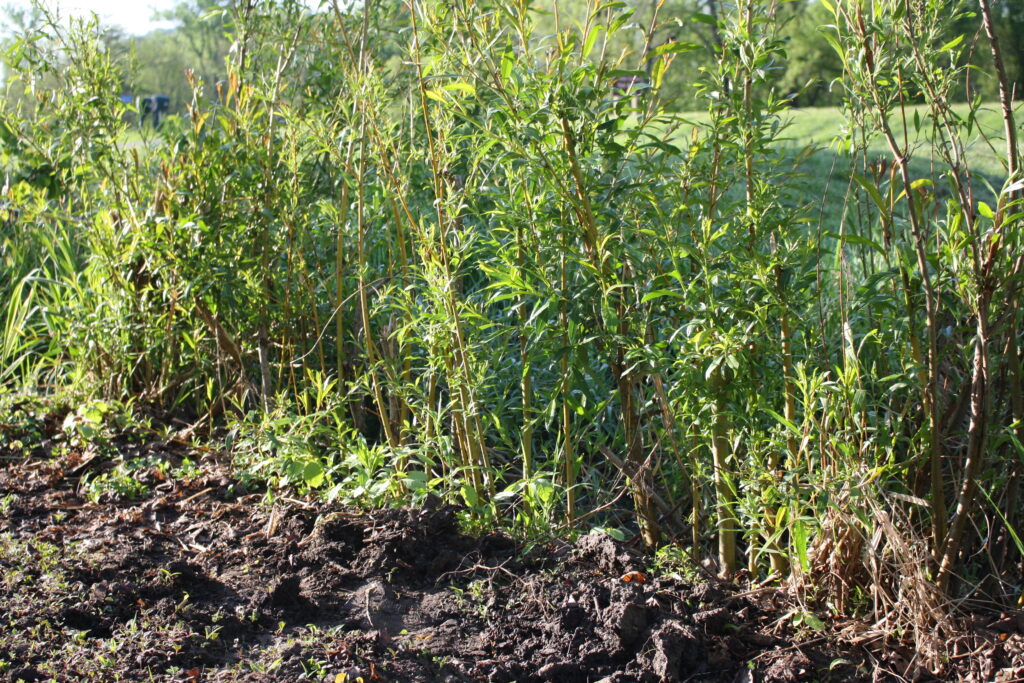
Why Grow Willow Trees?
There are several reasons to grow willow from cuttings. It is a very hardy and forgiving tree and you hardly need a “green thumb” to be successful at it. It is a great natural and quickly renewable resource that will open up lots of creative possibilities for traditional crafts. It’s practically free and easy to obtain, making it invaluable to the peasant of old and of today. Indeed, learning how to grow and manage your own willow coppice is a high-reward experience.
Growing and managing WIllow as a Resource
The willow truly is a unique tree to work with. Of course the weeping willow is nowadays the most popular variety for pretty much solely its aesthetic value. However, as I have read how ancient cultures utilized the willow for a wide range of practical purposes, I have become inspired to work with it myself. It was a project that combined nicely with my marsh garden project.
Amongst the trees of the North, the willow is one of the few that are able to grow from a stick that is freshly-cut and stuck in the mud. It’s really quite that simple!
what is a coppice?
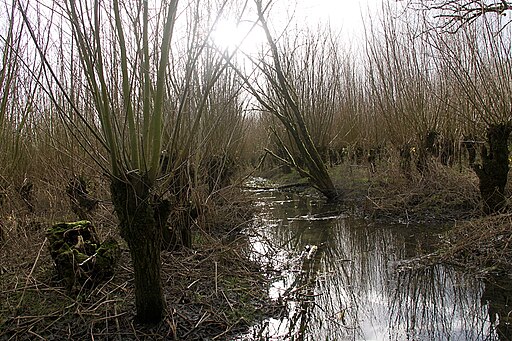
A coppice is an old European tradition of managing a certain type of woodland to provide a stable and sustainable source of resources. Bear in mind, wood is what built and powered civilization for the majority of the history of Mankind. Thus having a reliable and renewable system was essential.
Willow is a fast growing, water loving tree. In almost any wetland, you are likely to find one variety or another of willow growing vigorously in the sodden ground. Along with hazel, our Northern European ancestors relied heavily on this ready and most basic building material of wattle.
There are certain types of trees that, when felled, will send up fresh shoots from the root-stock. Along with willow, trees like oak, ash, birch and elm were utilized in this way. Now if these saplings are well-managed, they will provide a steady crop of different resources. The types of these resources were vast. They included:
- firewood
- withes for fences and wattle and daub construction
- basketry
- larger construction beams
- tool and weapon handles
- charcoal
- even fodder for livestock (I hope to write more extensively on that in the near future)

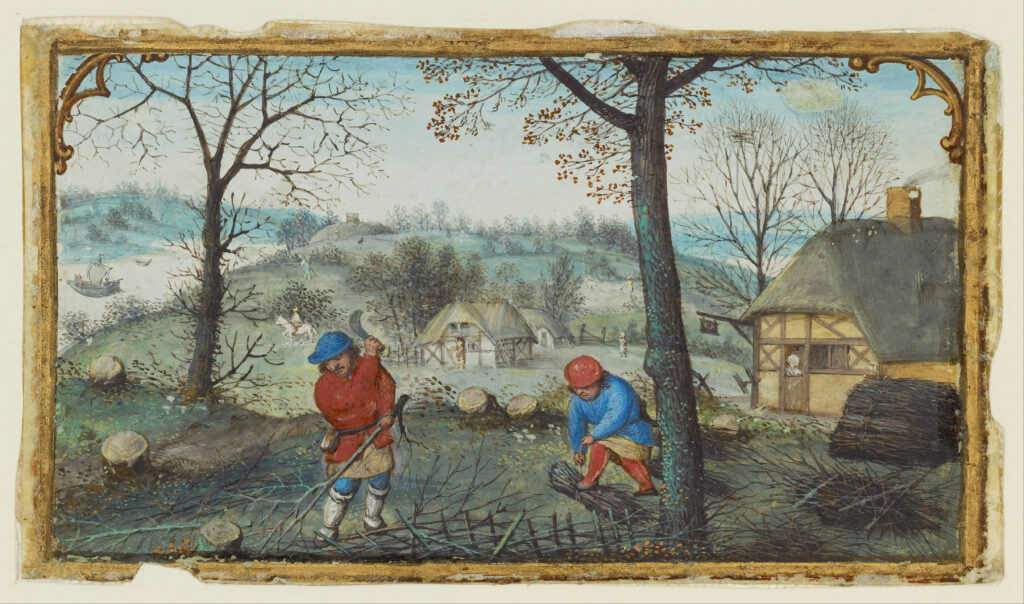
Willow Cuttings: Getting started...
Look along river banks and marshlands or simply ask a friend who may have a willow on their property for some cuttings. One important thing to consider is that if the willow you are gathering is from a thick patch of willow in a marsh, it is probably a variety that sends out suckers from its network of roots. Once established, it will take a close eye from keeping it from taking over the area (unless that’s what you want it to do).
When to cut...
You ought to gather your cuttings when the tree is dormant. Thus the best time is March and April, before the buds have leafed out.
If, for whatever reason you are not able to plant your cuttings right away, it is best to stick the bottom ends of them in water until you can get to them.
Planting
There are only a couple of things to keep in mind in order to successively grow willow from cuttings
Make sure the soil is always wet. Remember, willow is a water-loving tree, so if you are planting in a moist, low area, you can then pretty much forget about your cuttings. However, if you are planting in higher, well-drained soil, you will need to water your cuttings regularly to allow them to establish their roots without drying out. Most likely, you will have an abundance of cuttings. Best to plant more rather than less to ensure a larger success rate. But honestly, willows are very forgiving. Check back on them after things have leafed out later in the Spring and you should see something like this:
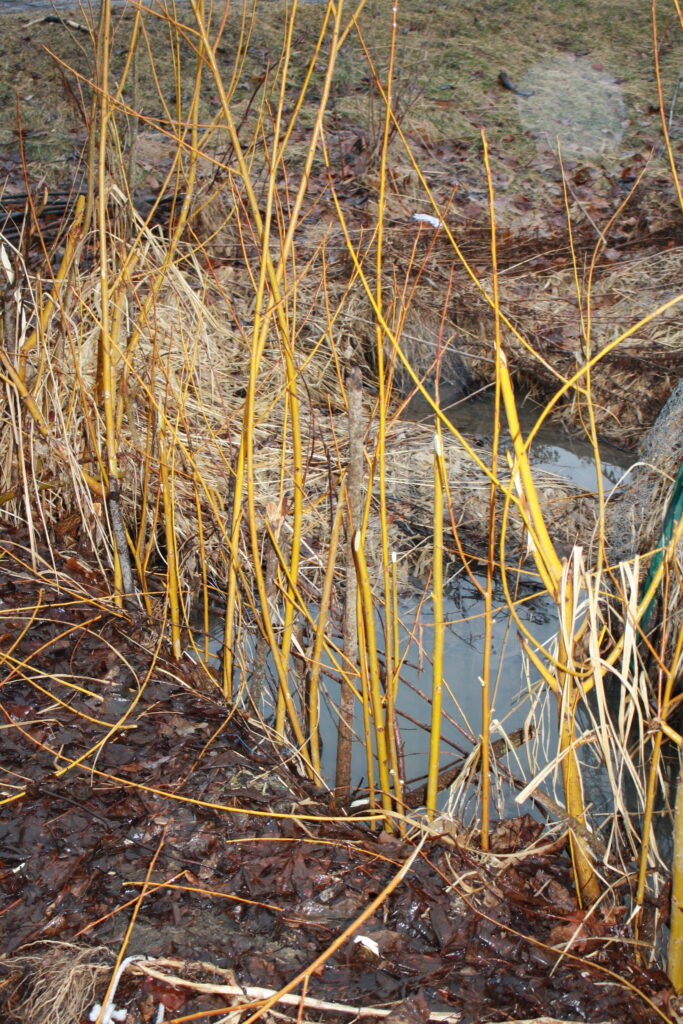
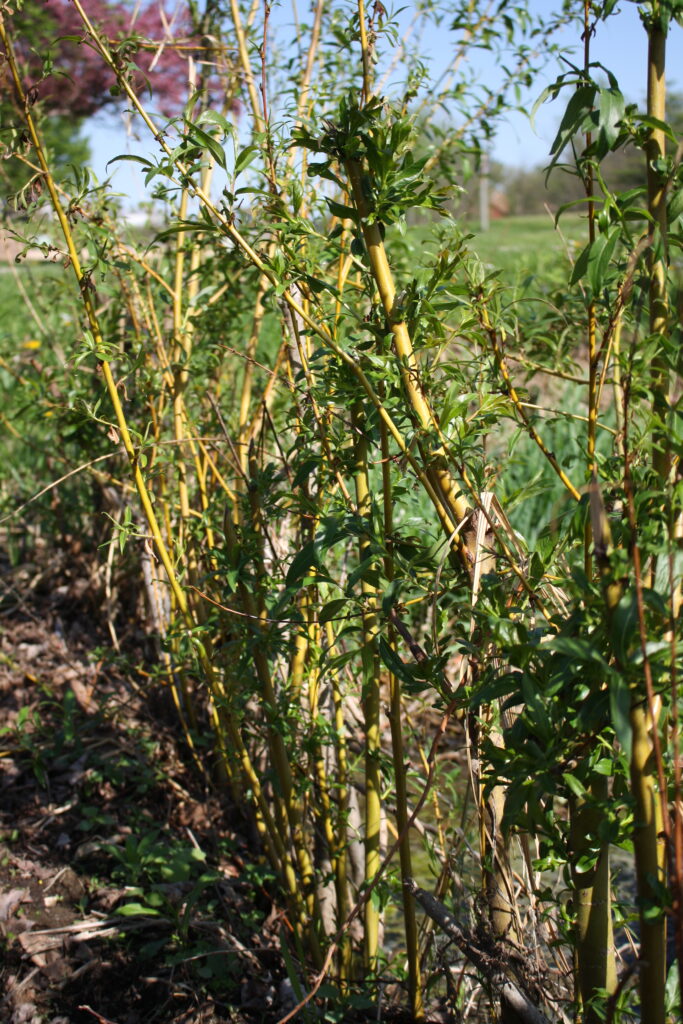
That’s pretty much all there is to it! As you can see, it is quite simple to learn to grow willow from cuttings. It is sure to grow quickly and prolifically. When winter comes and the trees go dormant, you can then start to harvest withes for your projects. The thin, first year growth is good for basketry. Two year growth (around a half inch in thickness) is good for wattle fences. For further inspiration on willow projects, check out my wattle fence garden terrace.


Leave a Reply